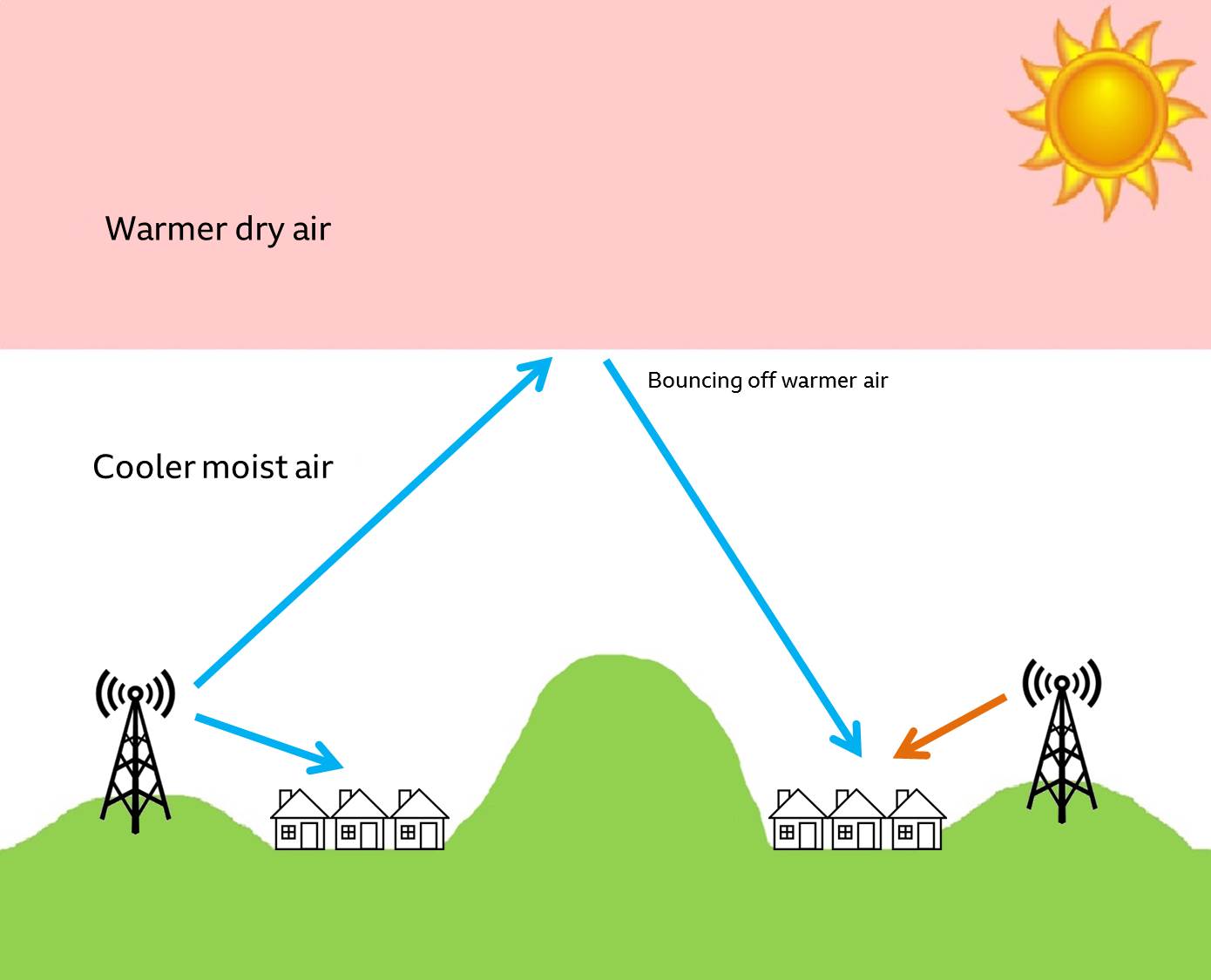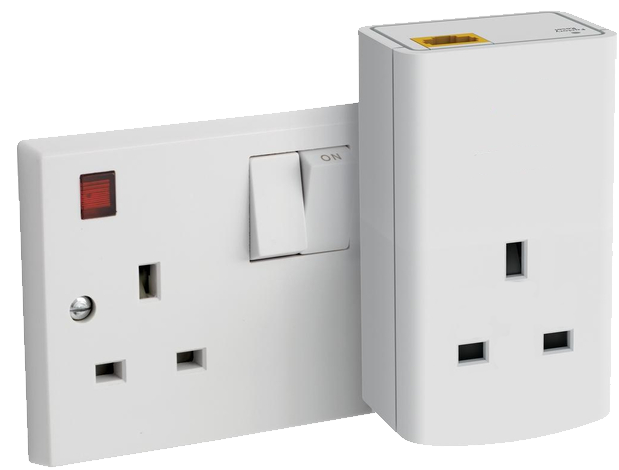Sometimes it's difficult to know whether the problem is due to poor reception or interference. It’s important to try to find out which because the causes and solutions can be quite different.
If you’ve had the problem continuously for some time and it is not affecting neighbours using their own aerials, it is likely to be a reception problem. If your reception is normally good but the problem occurs intermittently at similar times each day and it affects your neighbours’ reception at the same time in the same way, it’s more likely to be interference.
While reception problems can be caused by a number of different things they are normally the responsibility of the householder to overcome. It could be due to a problem with how you receive the signal, your equipment or even the weather. Occasionally it could be due to maintenance on our transmitter network or a fault at a specific transmitter.
Interference happens when an unwanted signal is received along with the wanted broadcast one, which itself may be perfectly good. This disrupts your ability to receive your wanted signal. When the unwanted one isn't there, reception is normal. Usually the only way to solve the problem is either to get rid of the unwanted signal, or take steps to avoid picking it up. You may need outside help to do this, although certain types of interference can be caused by something in the home, or due to a problem with the installation.
Reception problems
Reception trouble is usually the result of one of five things:
1. Set-up problems
Loose cables, incorrectly tuned televisions or set-top boxes and faulty aerials are the most common reasons for reception problems. We have installation guides for each platform in our Help Guide section.
2. Tuned to the wrong transmitter
Most homes are able to pick up signals from more than one transmitter. The strongest signal is normally from the transmitter your aerial is pointing towards. However, your aerial will still pick up weak signals from the other transmitters. When a television set auto-tunes, it automatically starts from the bottom of the channel or frequency range and works upwards. It tunes to the first channel it comes across, even if it is a weak signals from a transmitter your aerial isn't pointing towards. We always recommend a manual re-tuning to ensure your television is receiving the signal from the transmitter your aerial is pointing towards. See our guide on Manual retune for more helpful information.
3. External factors
It is important you have a clear line of sight between the aerial and the transmitter anything in the way, like a large tree, will disrupt reception.
4. Weather
Weather such as high pressure, or very heavy rain, can affect reception, but normally only for a short time. There is usually very little that can be done about this. See how weather can impact freeview reception.
5. Transmitter problems
We occasionally undertake maintenance, or a fault may occur. Please use our transmitter checker tool which has live updates on any faults or maintenance.
Interference problems
Interference faults usually have a distinct pattern and will often start and stop at around the same time each day. Here are some examples of interference sources:
Thermostats
Should the thermostat in your home, or a neighbour’s home, develop a fault it can disrupt your reception. This is caused by an electric spark which is picked up by your radio or television and blocks the signal for a very short time.
Faulty lights or LED lights
Low-voltage, LED lamps can sometimes cause interference. The problem is worse with 12V types. The more lamps switched on at the same time, the worse it becomes. Also fluorescent lights and street lights cause problems when they become faulty. Typical examples are the break-up or freezing of TV pictures and breakthrough on your radio. The time of the problem can change depending on the time of year and when it gets dark.
Taxis
Problems can occur either when the viewer or listener lives very close to a base station, or where taxis congregate (railway stations, supermarkets, clubs etc.) close to a residential area. However, it is important to realise that the mechanism by which reception can be disrupted is not the fault of the taxi companies, but a proximity effect.
Passing traffic
Every time traffic passes the property there is an interruption to the wanted signal which is not affected at any other time.
Problem Assistant
To assist you we have created a problem assistant that will help you to diagnose the problem and work out whether it is reception or interference.

